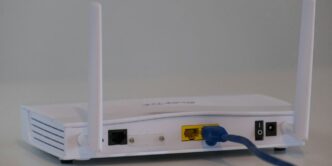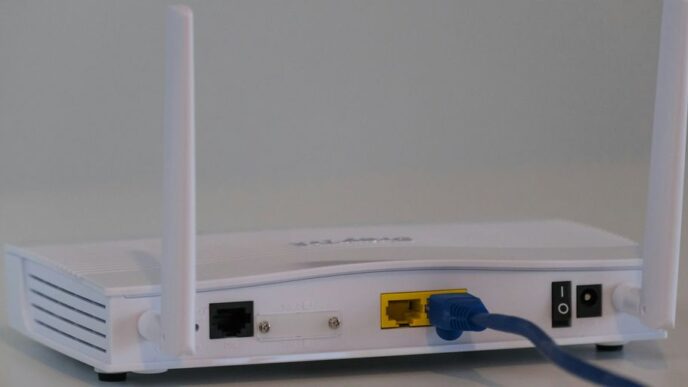In our modern, fast-paced world, communication is synonymous with speed and convenience. But have you ever stopped to marvel at how far we’ve come? The journey of telecommunication, from the humble beginnings of Morse code to the revolutionary capabilities of 5G technology, is truly awe-inspiring. Join us as we embark on a thrilling voyage through time, exploring the remarkable advancements that have shaped our ability to connect across vast distances. Get ready to be amazed by the incredible strides made in telecommunication technology – it’s a story you won’t want to miss!
Introduction to Telecommunication Technology
Telecommunication technology has undergone a remarkable transformation since its inception in the early 1800s. Initially, it relied on Morse code telegraphy, which used electrical signals to send messages over long distances. However, this system was slow and unreliable. It wasn’t until the late 1800s, with the invention of the telephone, that telecommunication began to take its modern form. Today, telecommunication is an integral part of our lives, with nearly everyone owning a cell phone and using some form of communication on a daily basis. The future of telecommunication looks even more exciting with the advent of technologies like VoIP (Voice over Internet Protocol), 5G wireless networks, and satellite communications.
History of Telecommunication: Morse Code to 5G
In 1837, Samuel Morse and Alfred Vail revolutionized long-distance communication by developing the telegraph. In 1866, the laying of the first transatlantic cable connected North America and Europe. Alexander Graham Bell’s invention of the telephone in 1876 further transformed communication by enabling direct conversation between individuals. The early 20th century witnessed the development of radio and television, bringing news and entertainment into people’s homes. The advent of cellular networks in the 1980s enabled communication on the go. In the 1990s, the internet became widely accessible, providing a new way to communicate and access information. The introduction of 3G and 4G networks in the early 21st century offered increased mobility and data access. Now, 5G technology is set to revolutionize communication once again with its ultra-fast speeds and low latency.
Advantages of Advanced Telecommunication Technology over Traditional Communication
Increased Communication Capacity:
Advanced telecommunication technologies enable the transmission of larger amounts of information. Digital data transmission, more efficient than analog transmission used in traditional systems, accounts for this increased capacity.
Greater Flexibility and Scalability:
Advanced telecommunication technology provides greater flexibility and scalability. With digital data transmission, it is easier to add or remove channels as needed and scale the system to meet changing demand. In contrast, traditional communication systems tend to be more static and inflexible.
Improved Quality:
Advanced telecommunication systems offer improved quality. Digital data transmission results in clearer and more reliable communications, with reduced interference and noise. This is a significant improvement over older analog systems that were susceptible to degradation and static.
Different Types of Telecommunications Technologies Explained
Over the years, various types of telecommunications technologies have been developed:
- Morse Code:
Developed in the 1830s, Morse code uses dots and dashes to represent letters and numbers, allowing long-distance communication via telegraphy.
- Telephone:
Invented by Alexander Graham Bell in 1876, the telephone revolutionized communication by enabling direct conversations without Morse code.
- Radio:
Early 20th-century development allowed broadcasting messages over long distances using electromagnetic waves.
- Television:
Invented in the 1920s, television enabled the transmission of images and sound over long distances.
- Satellite:
Developed in the 1960s, satellite technology allows signals to be sent between points via orbiting satellites.
- Fiber Optics:
A more recent development, commercially used since the 1980s, involves the transmission of light signals through lightweight glass or plastic fibers over long distances.
Advantages and Disadvantages of Each Type
Each type of telecommunication technology has its own advantages and disadvantages:
Morse Code:
Advantages: Can be transmitted over long distances without special equipment.
Disadvantages: Slow form of communication.
Telegraphy:
Advantages: Faster transmission compared to Morse code.
Disadvantages: Requires expensive and less accessible special equipment.
Telephony:
Advantages: Faster, more reliable communication.
Disadvantages: Susceptible to interference from other electrical devices.
Radio:
Advantages: Reaches remote areas lacking other infrastructure.
Disadvantages: Susceptible to interference from natural phenomena.
Potential for Future Technologies
Similar to how the telegraph spurred the development of other telecommunications forms, current technologies hold the potential for future advancements. Optical fiber stands out as a promising technology, allowing incredibly high-speed data transmission with minimal signal loss. While expensive to install and maintain, it is gradually becoming more prevalent in developed countries. Other potential technologies include 5G wireless networks, satellite broadband, and blockchain technology. Advancing telecommunications infrastructure is critical, providing instant communication regardless of location and ensuring connectivity during emergencies when other means may be unavailable.
Conclusion
The journey from Morse Code to 5G is a testament to the incredible evolution of telecommunication technology. We now live in an era of lightning-fast, easily accessible communication, regardless of our location. Without these technological developments, many of the conveniences we take for granted today would not exist. Although there is still much progress to be made, reflecting on how far we have come is inspiring. We can only imagine the exciting destinations this journey will lead us to in the future.













